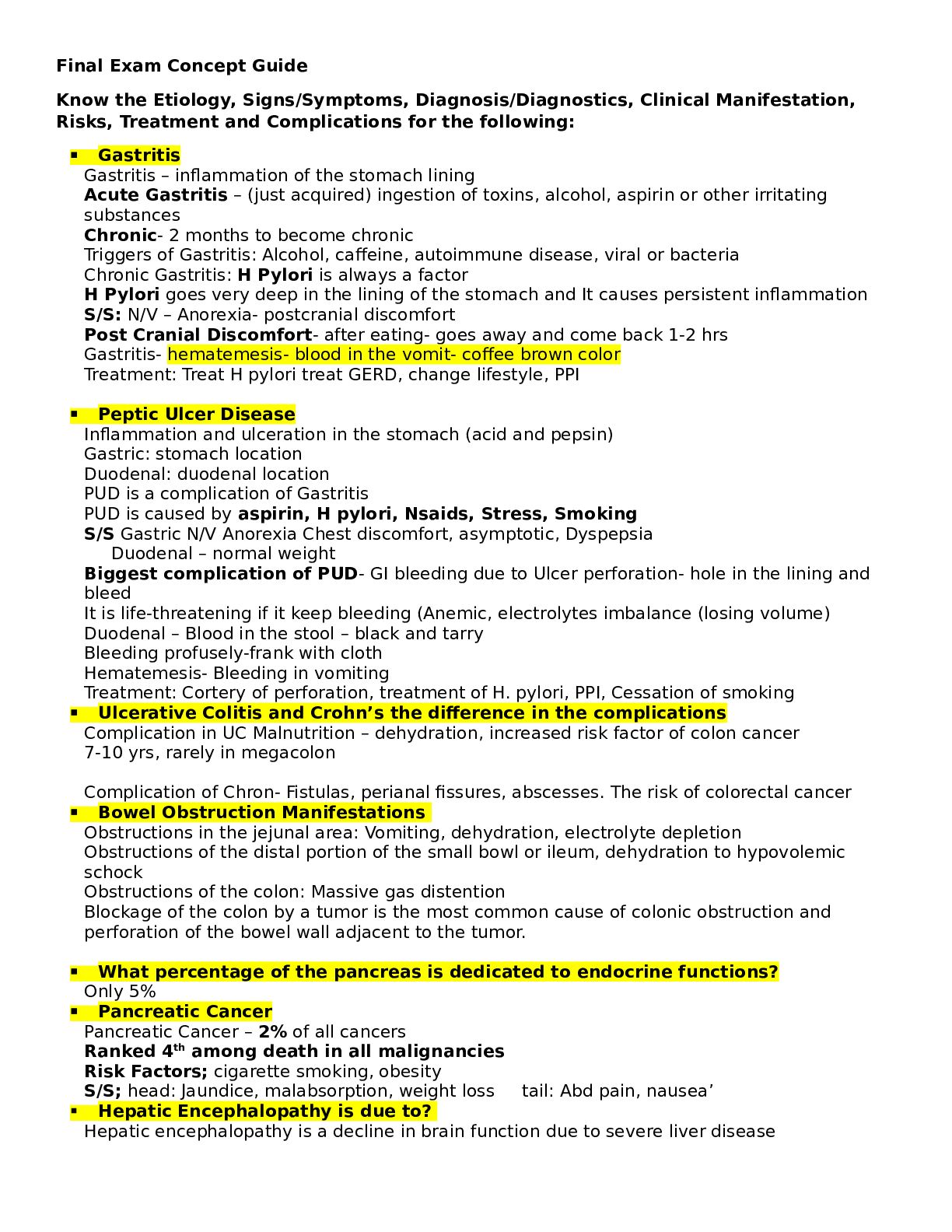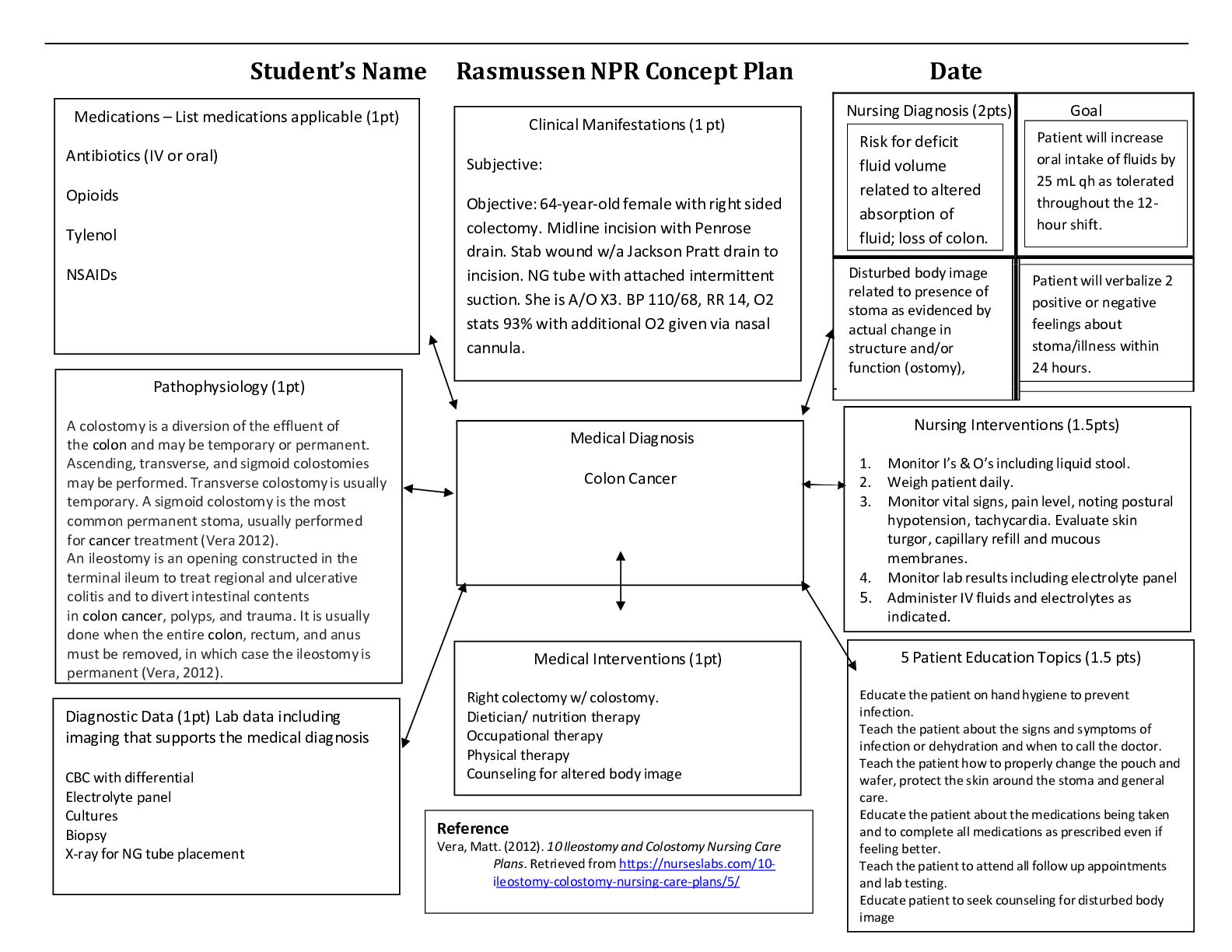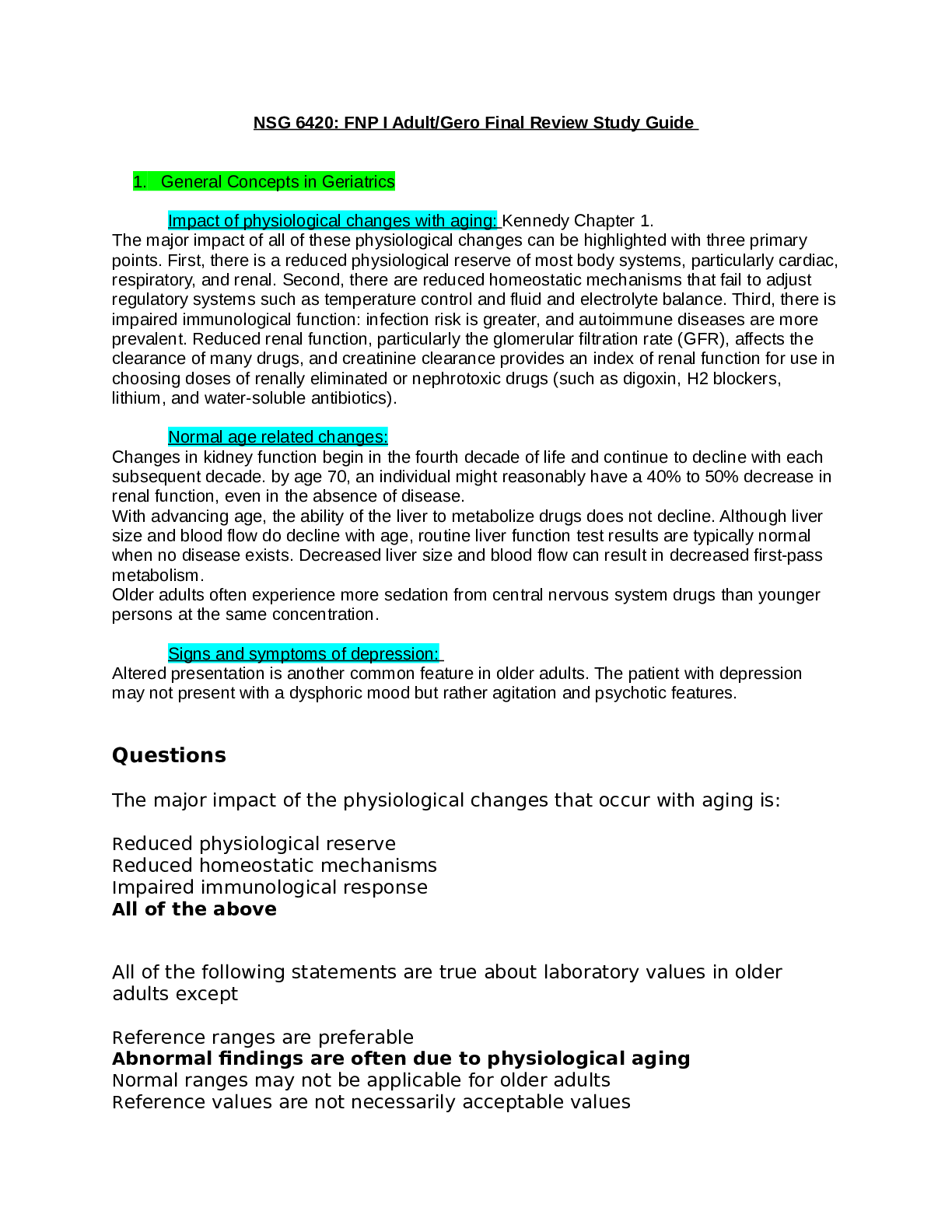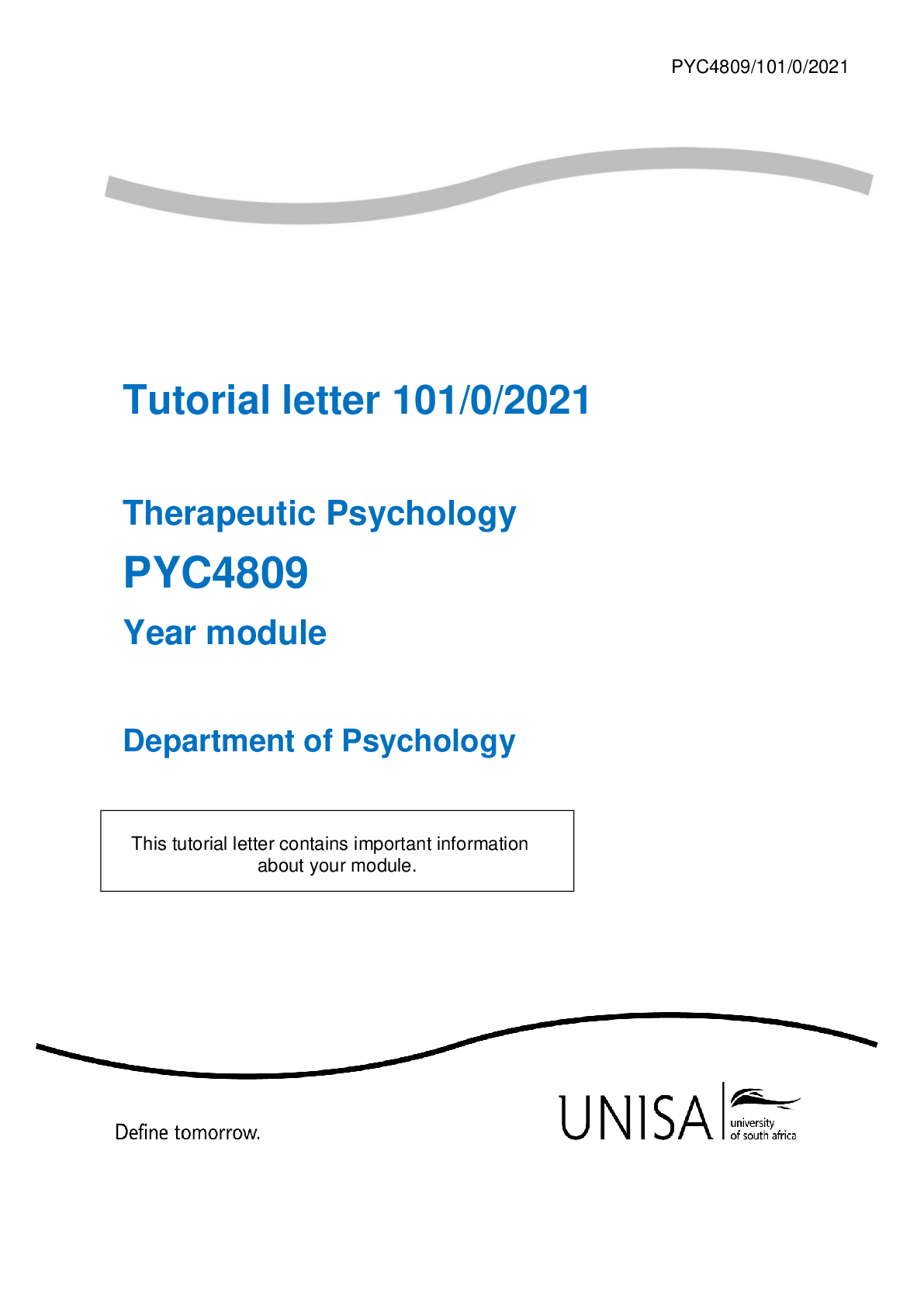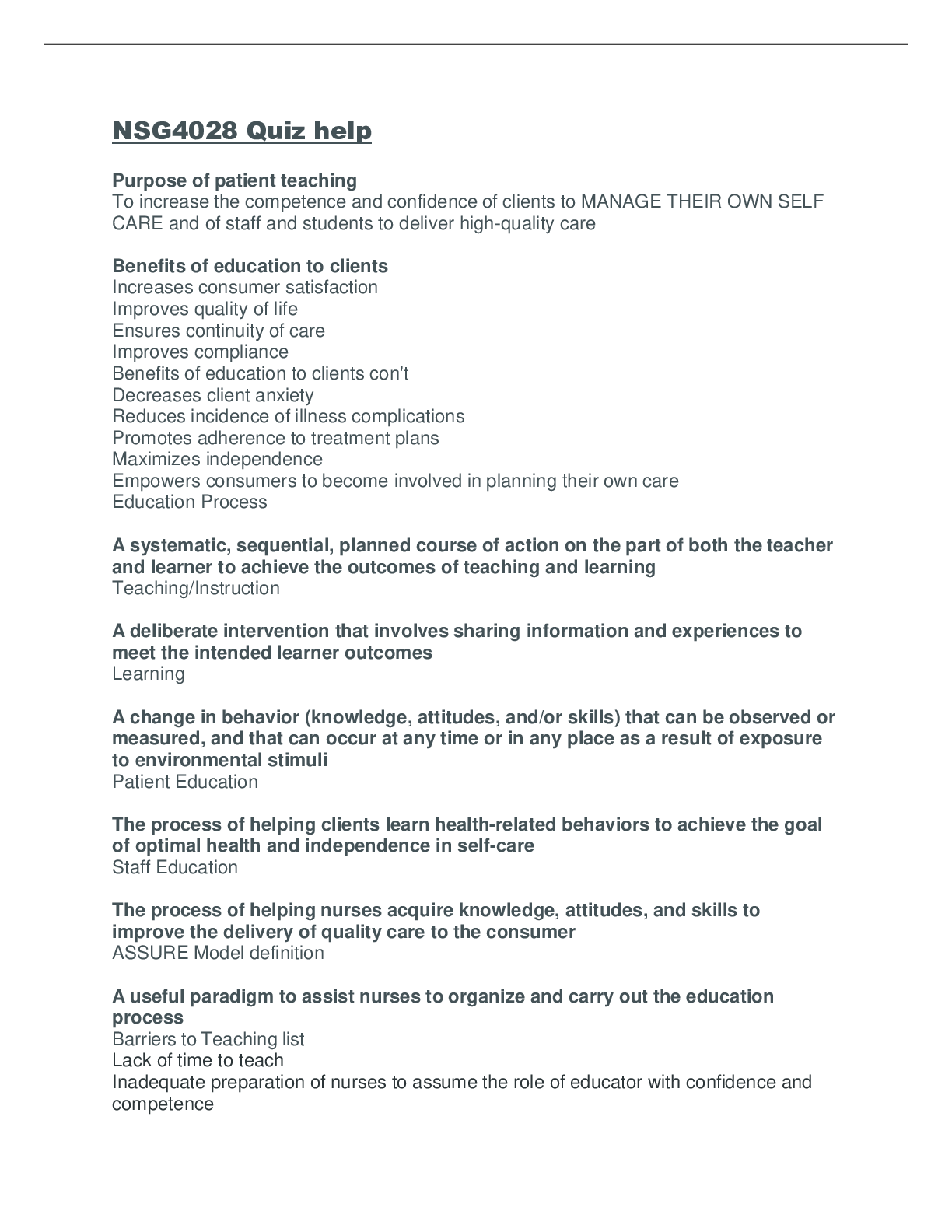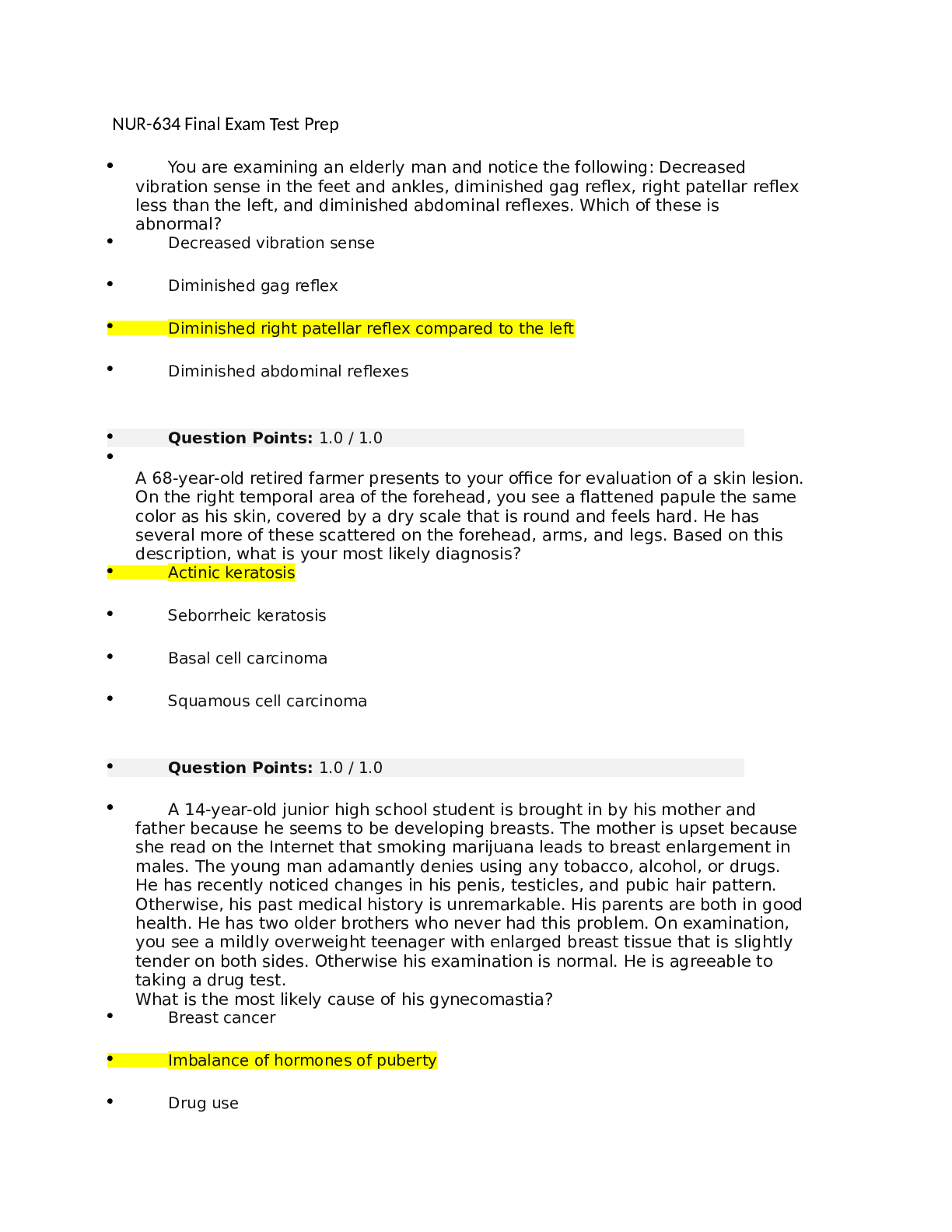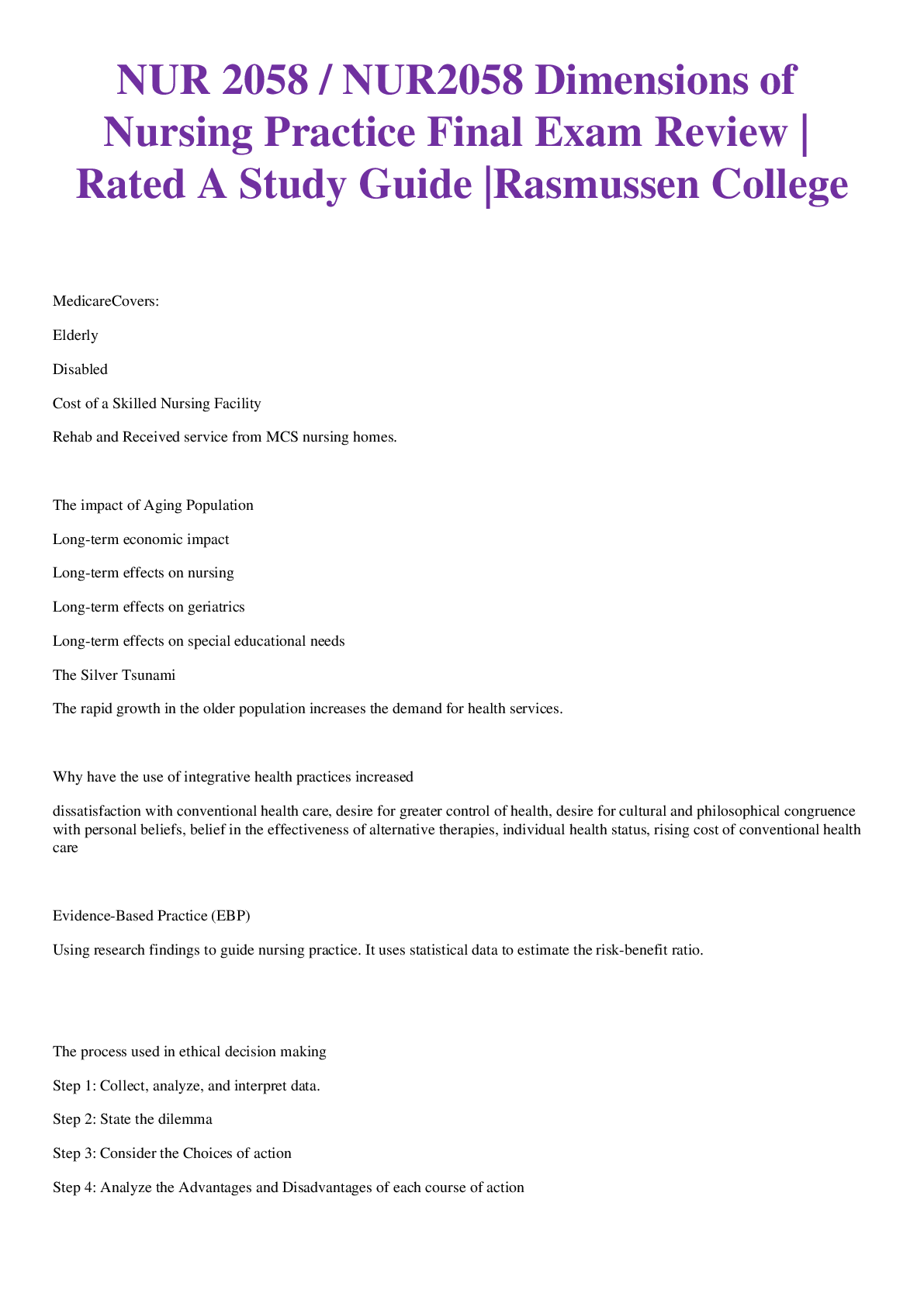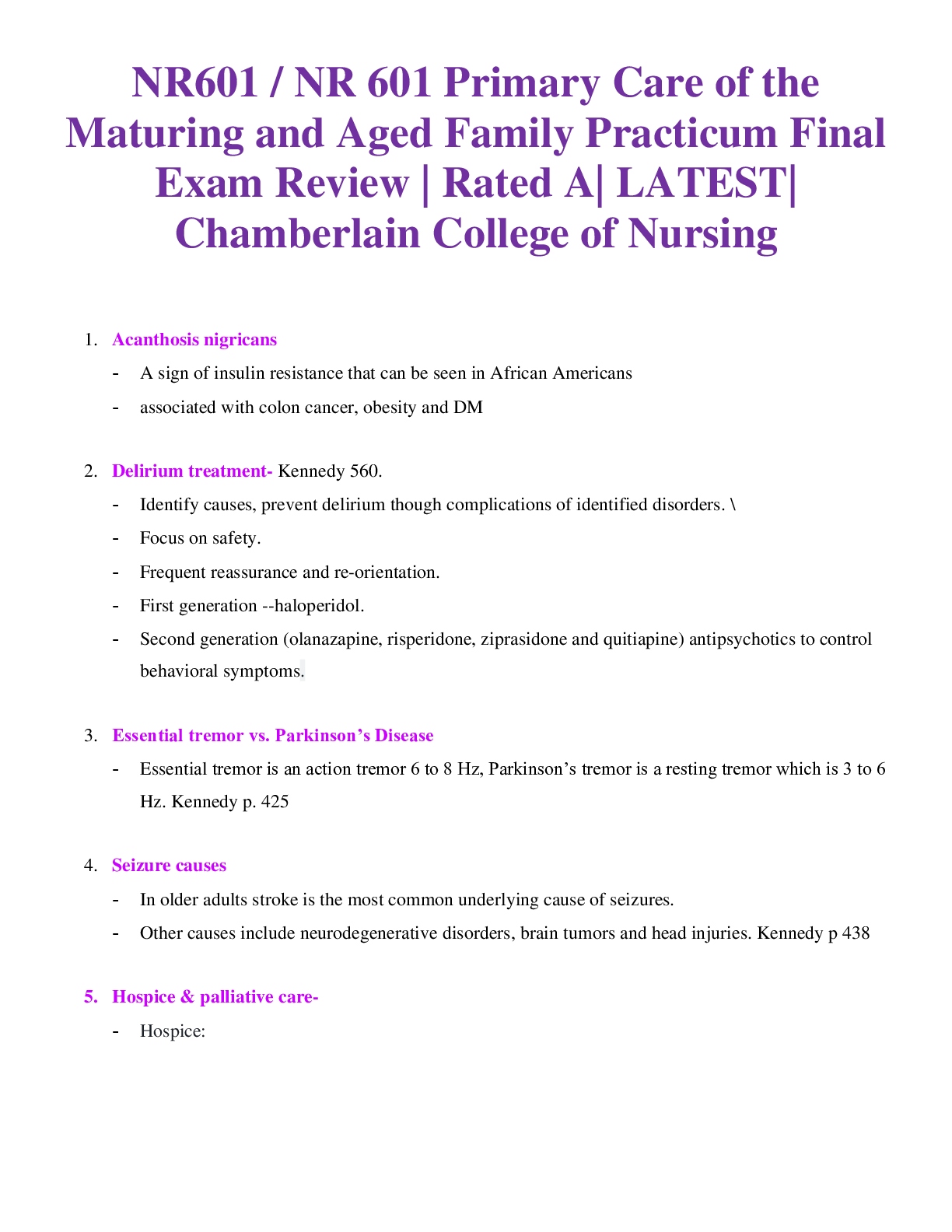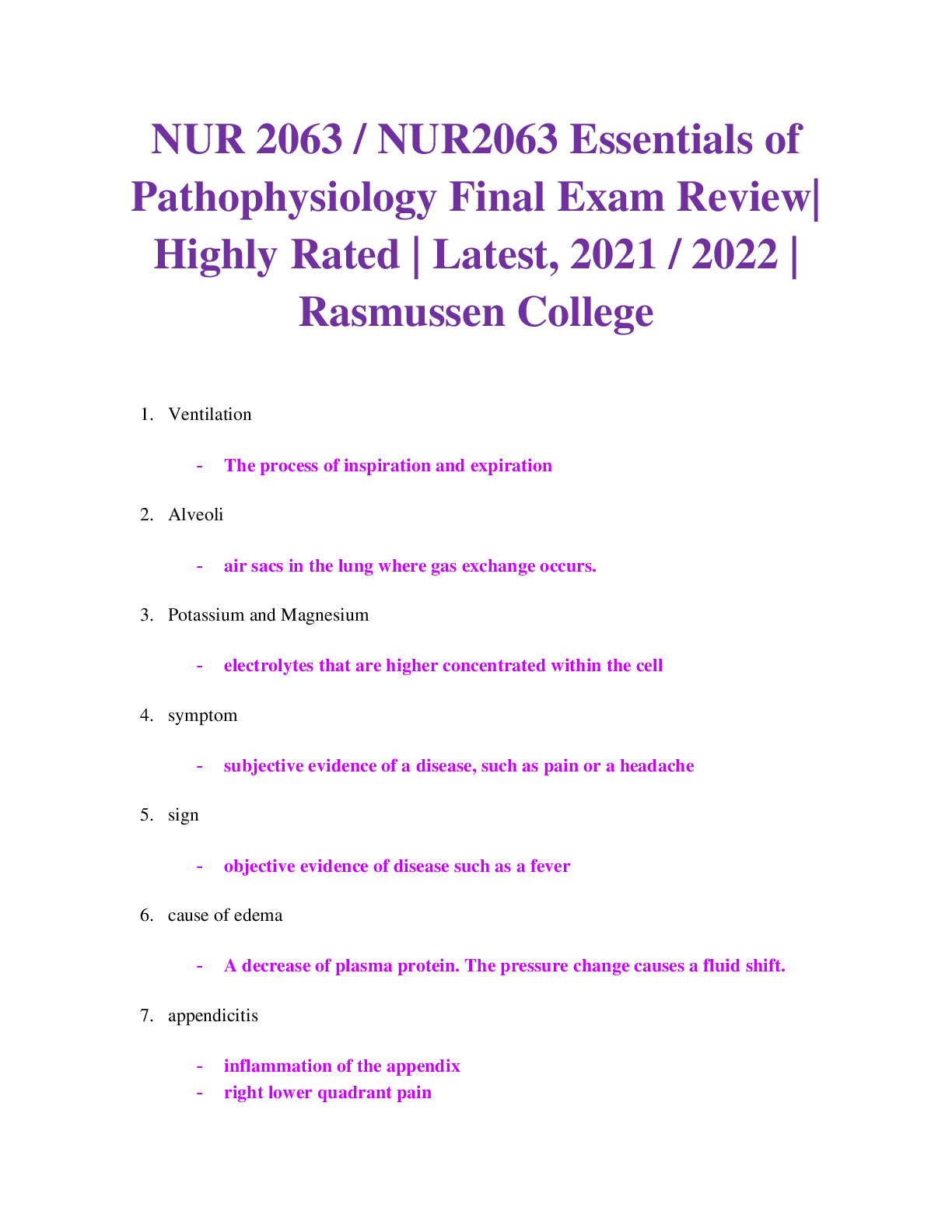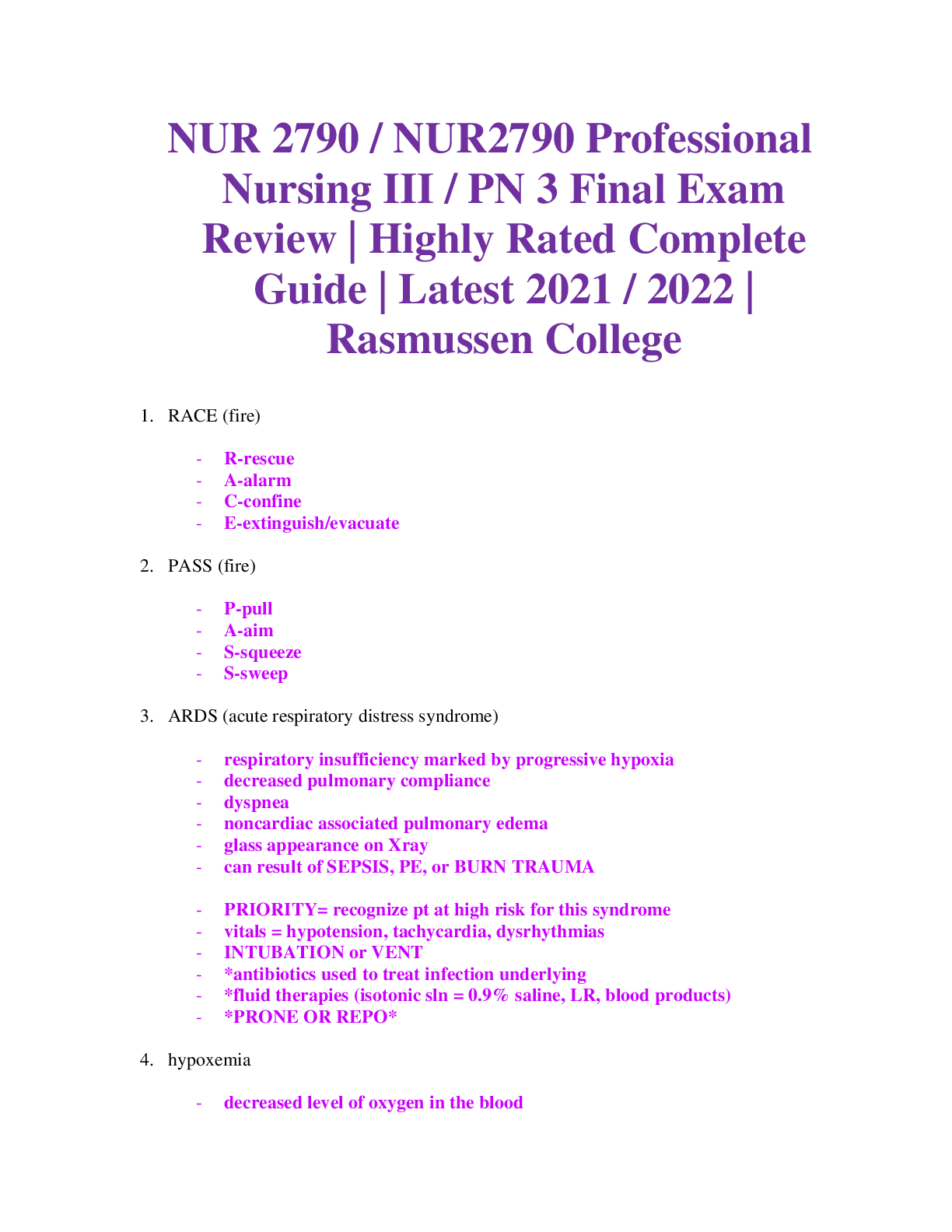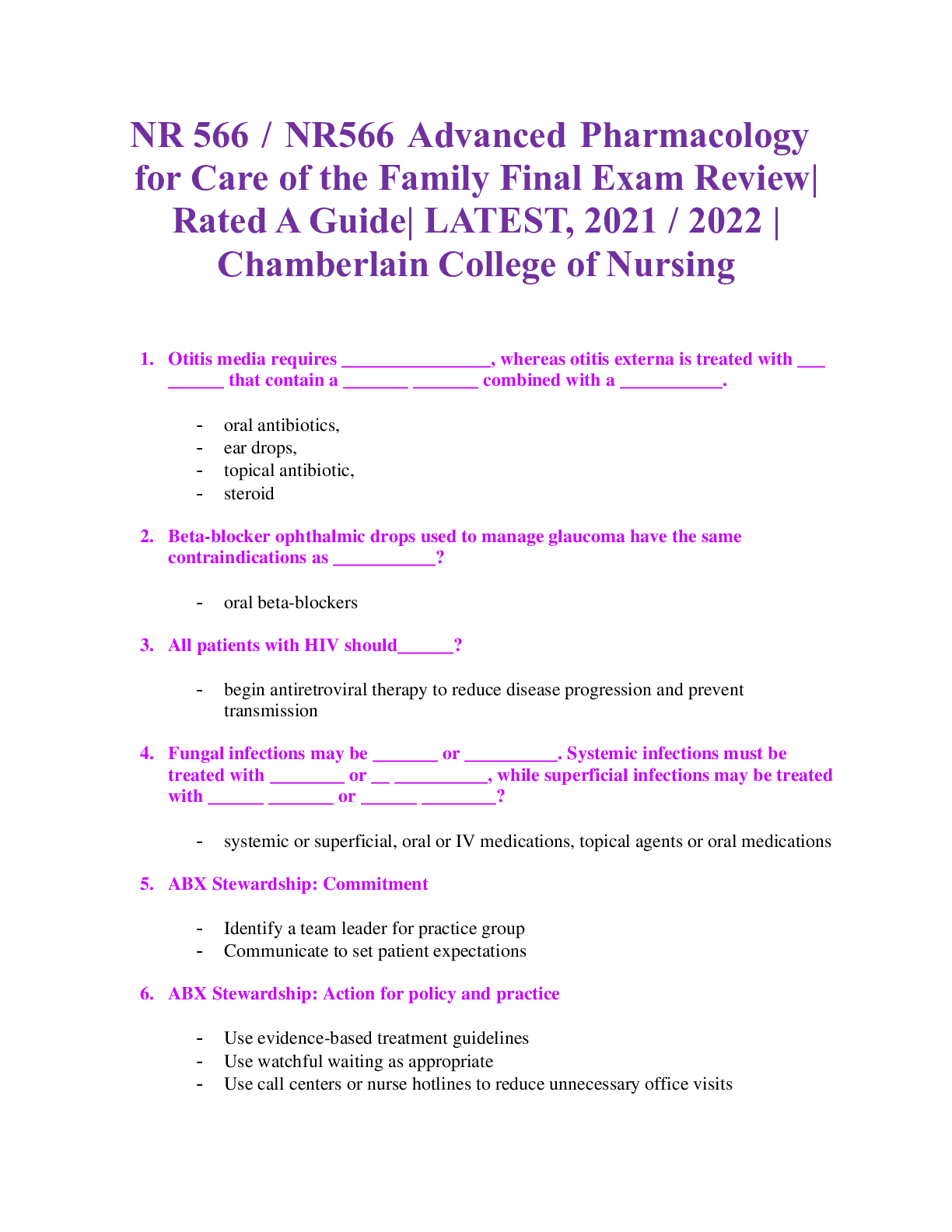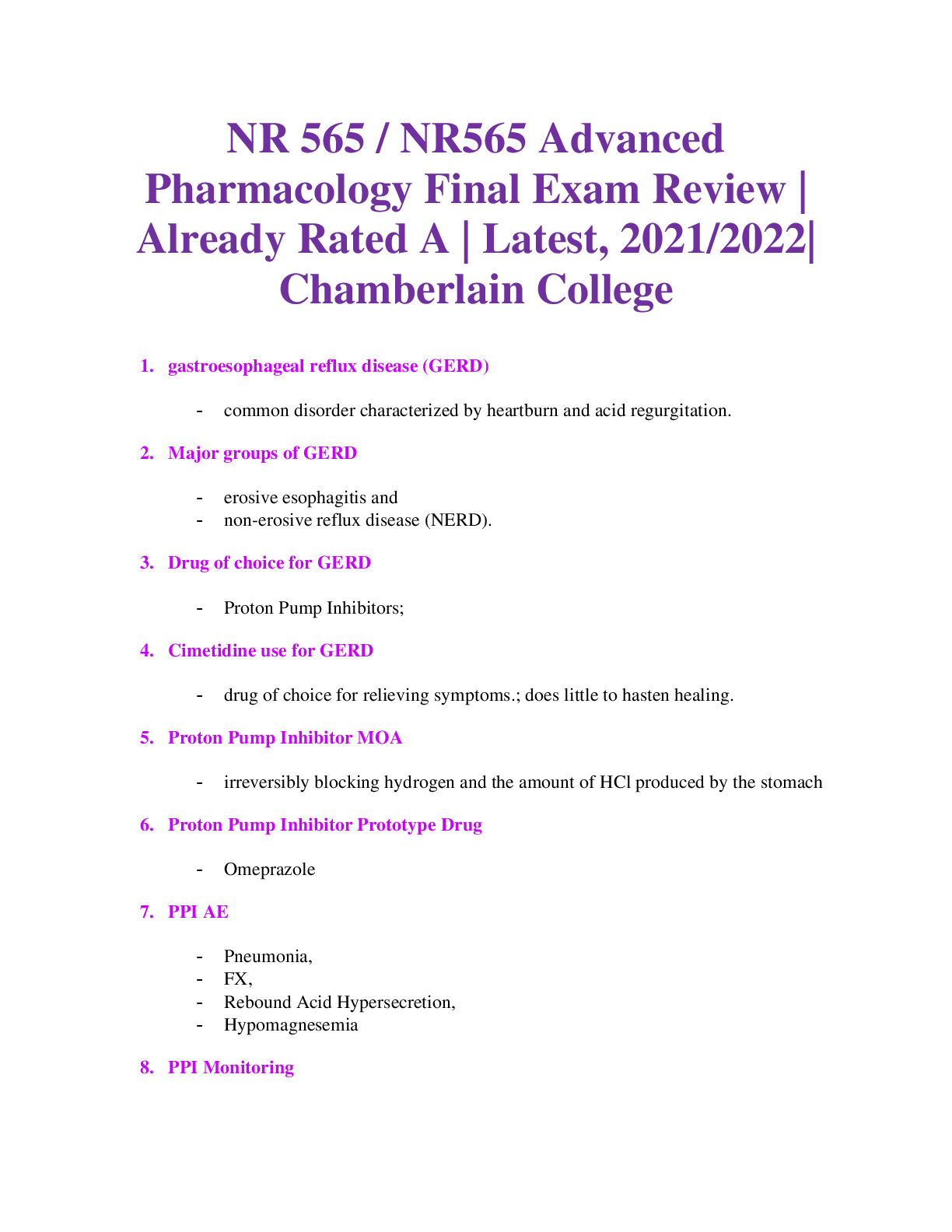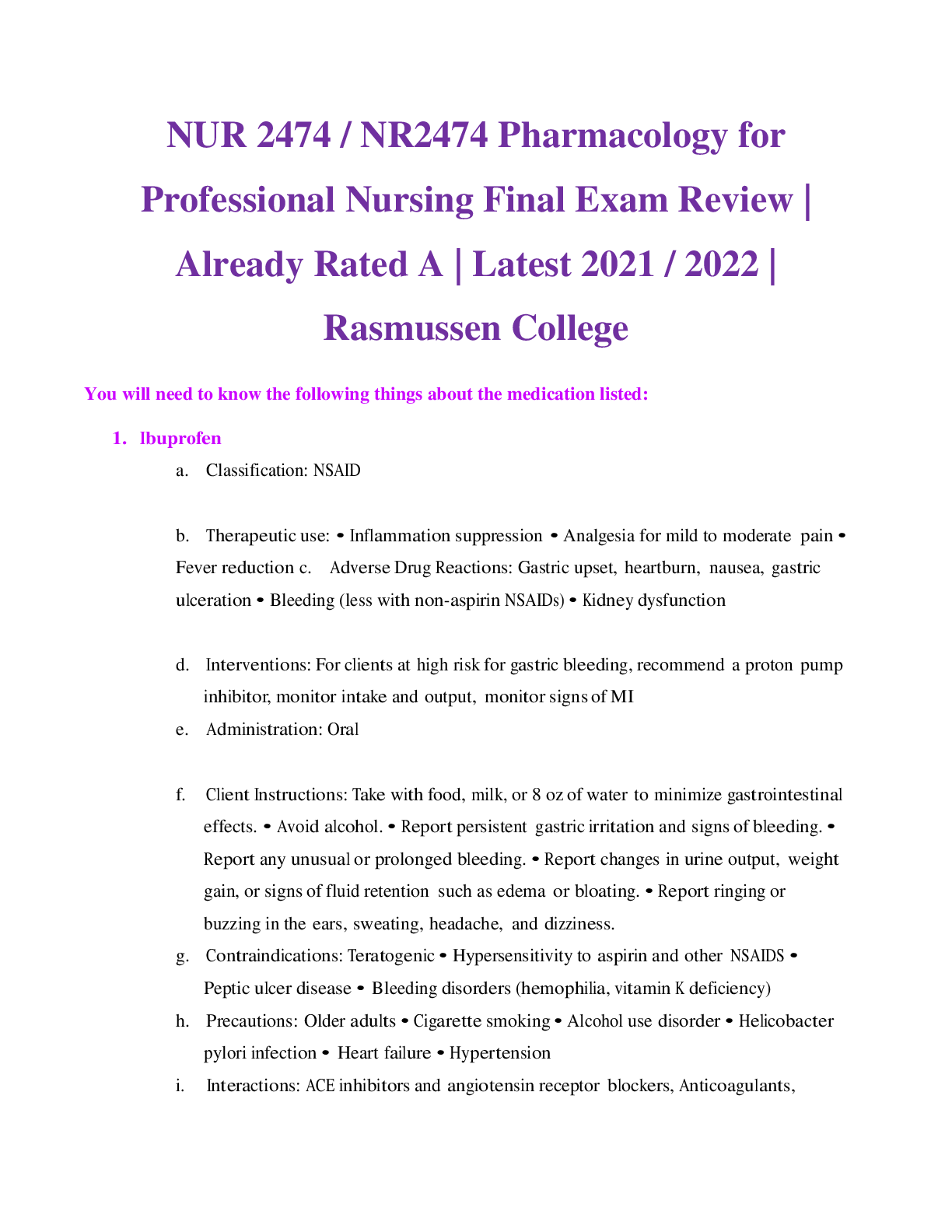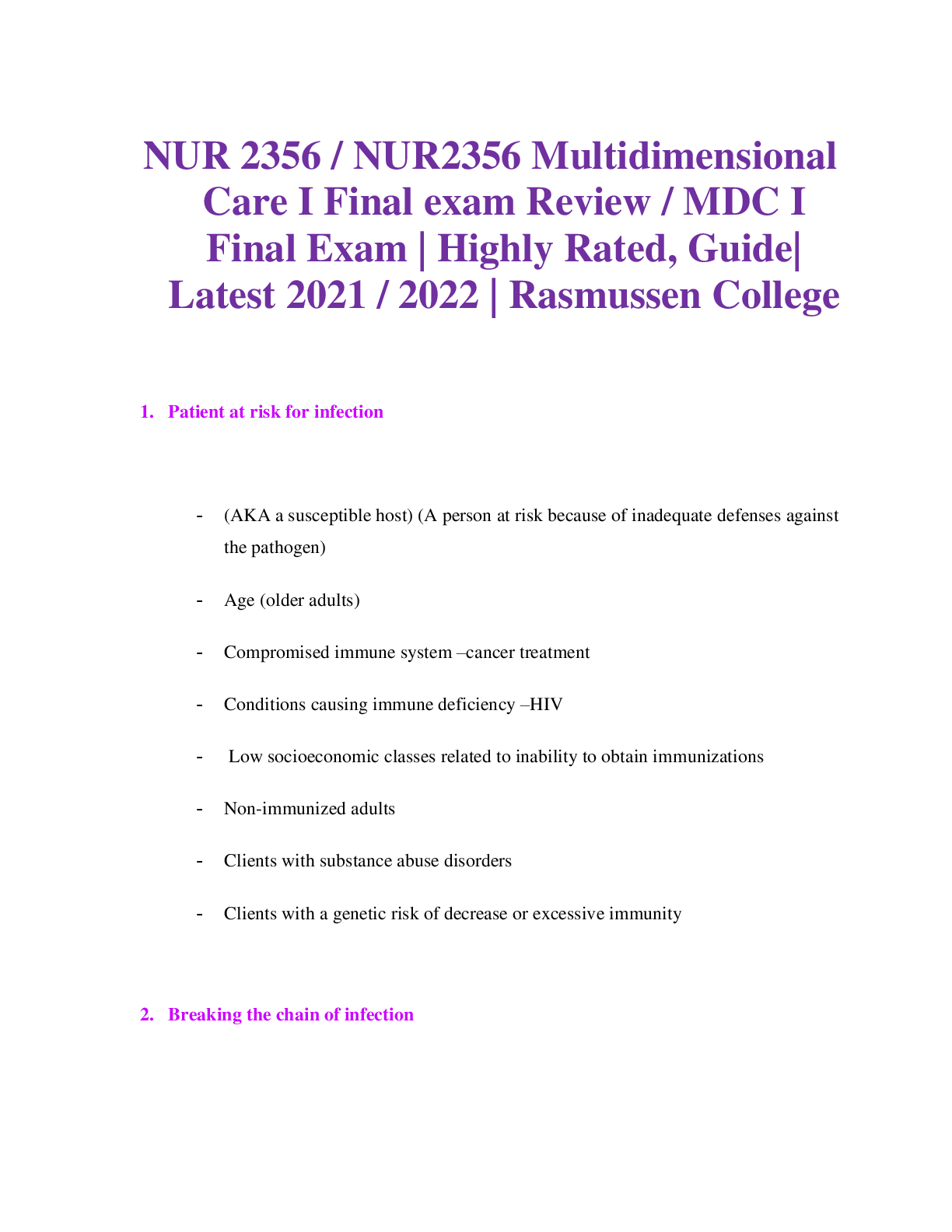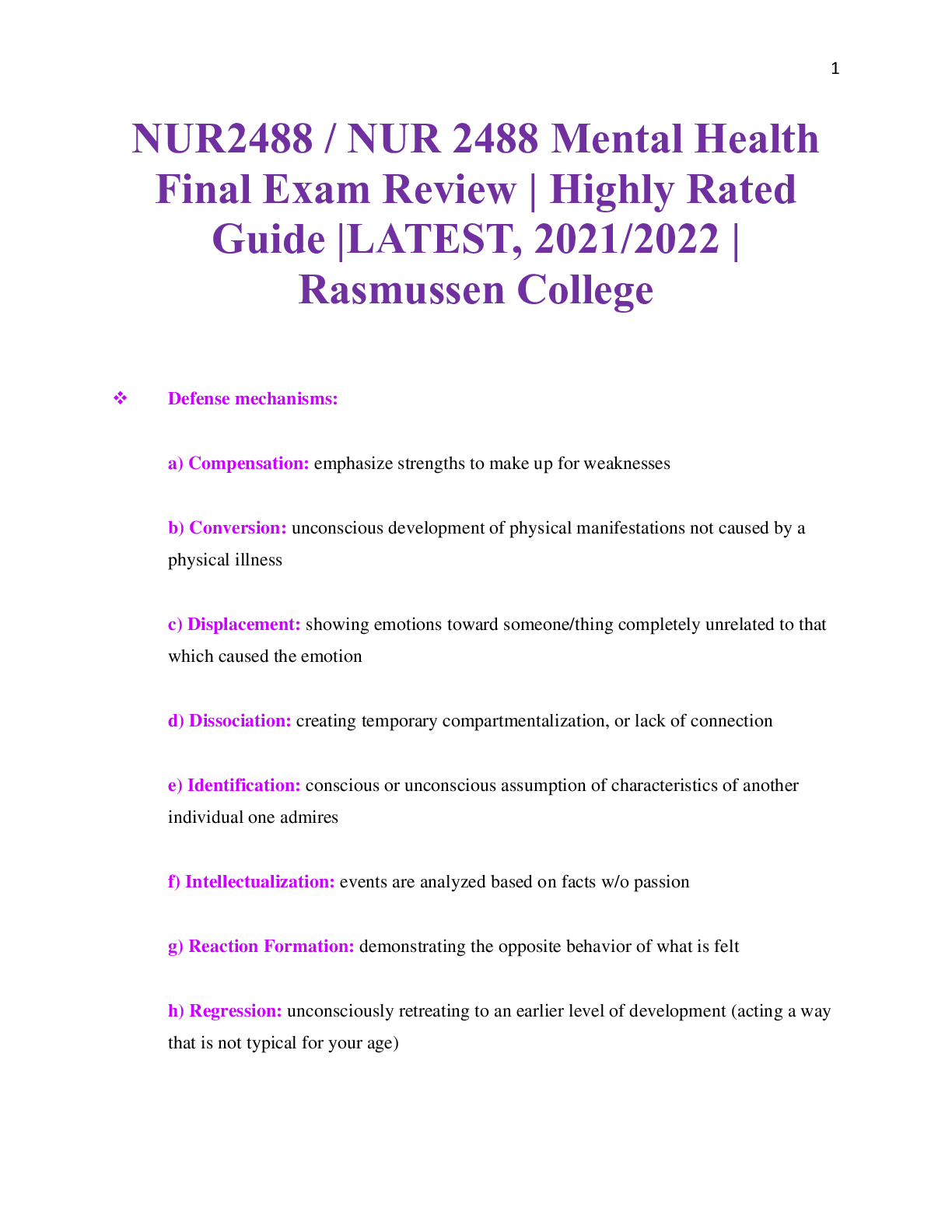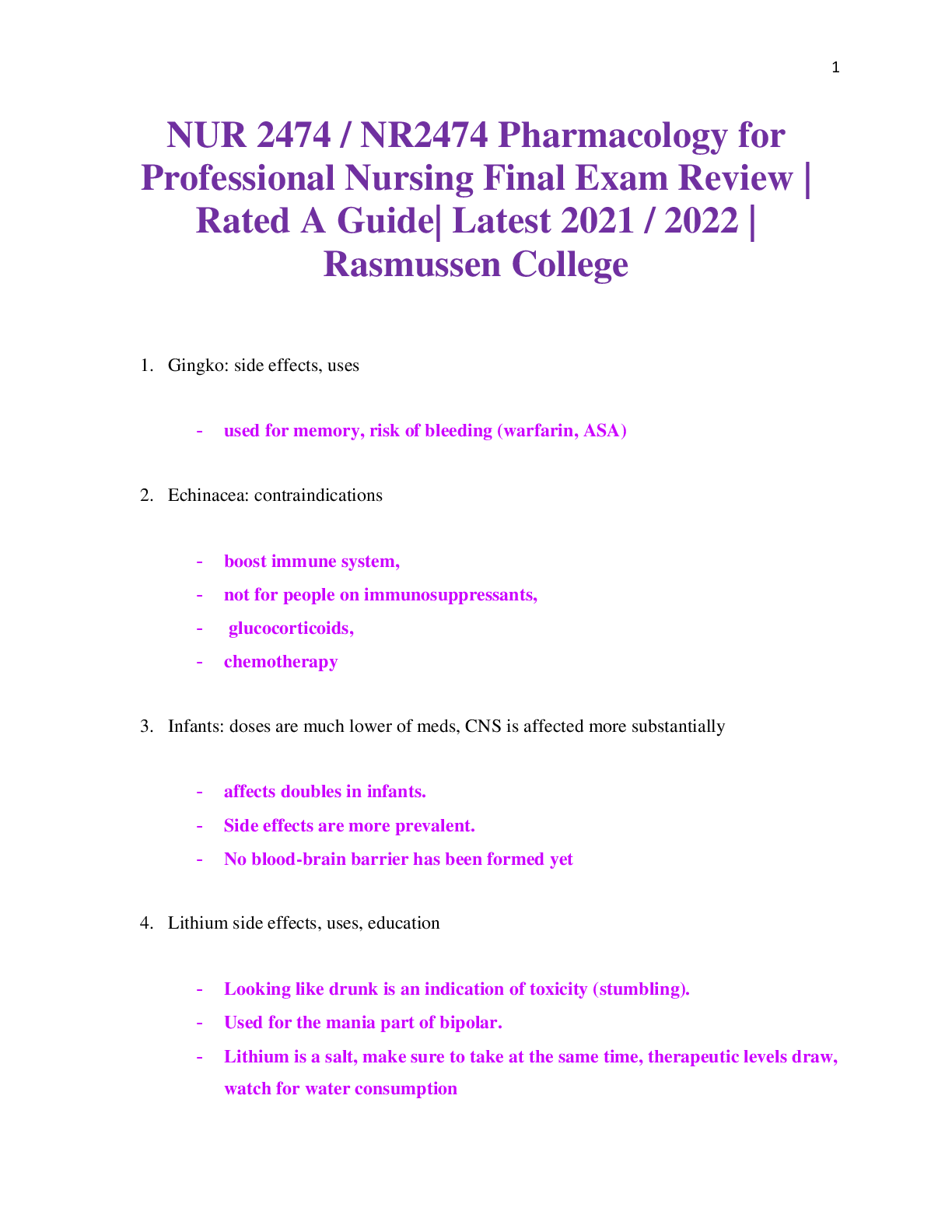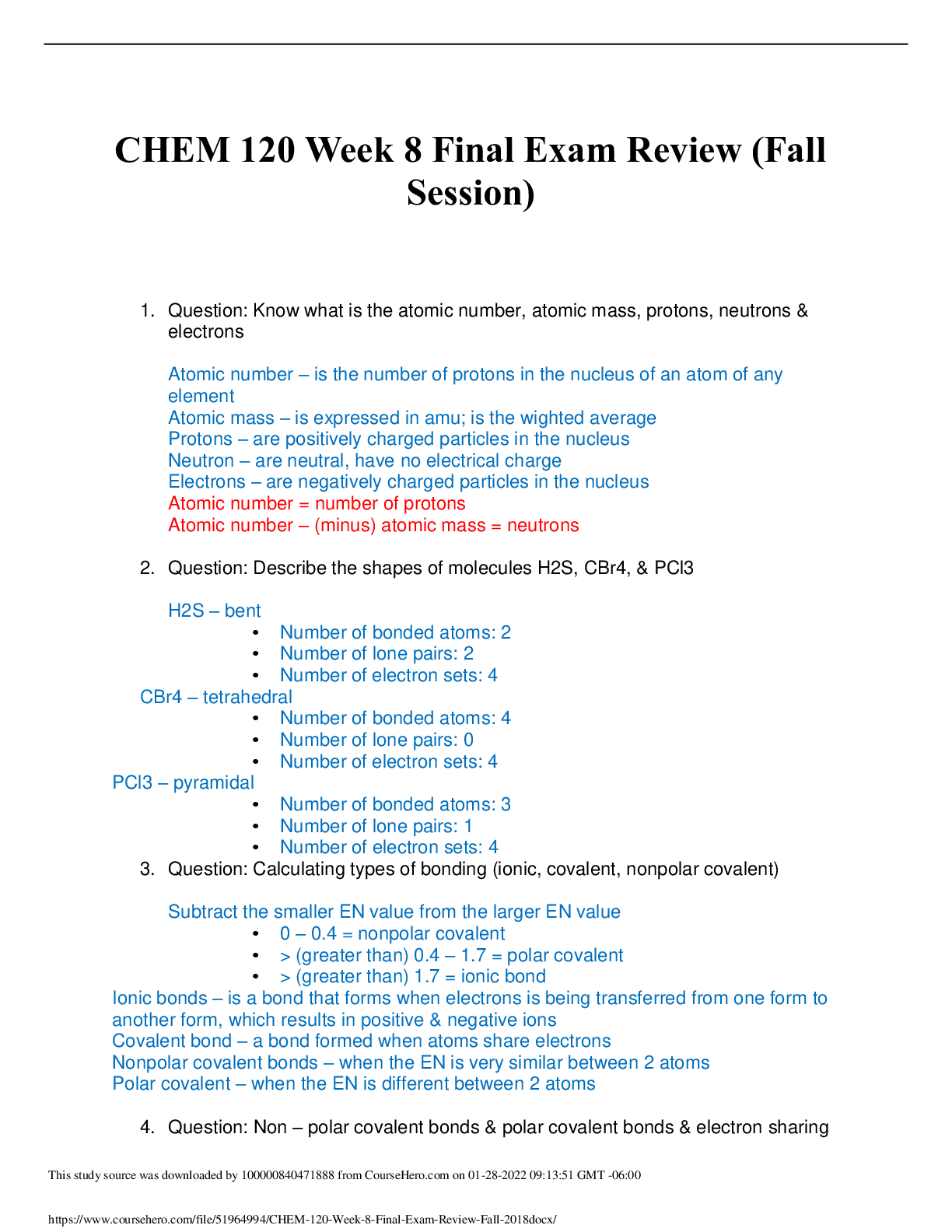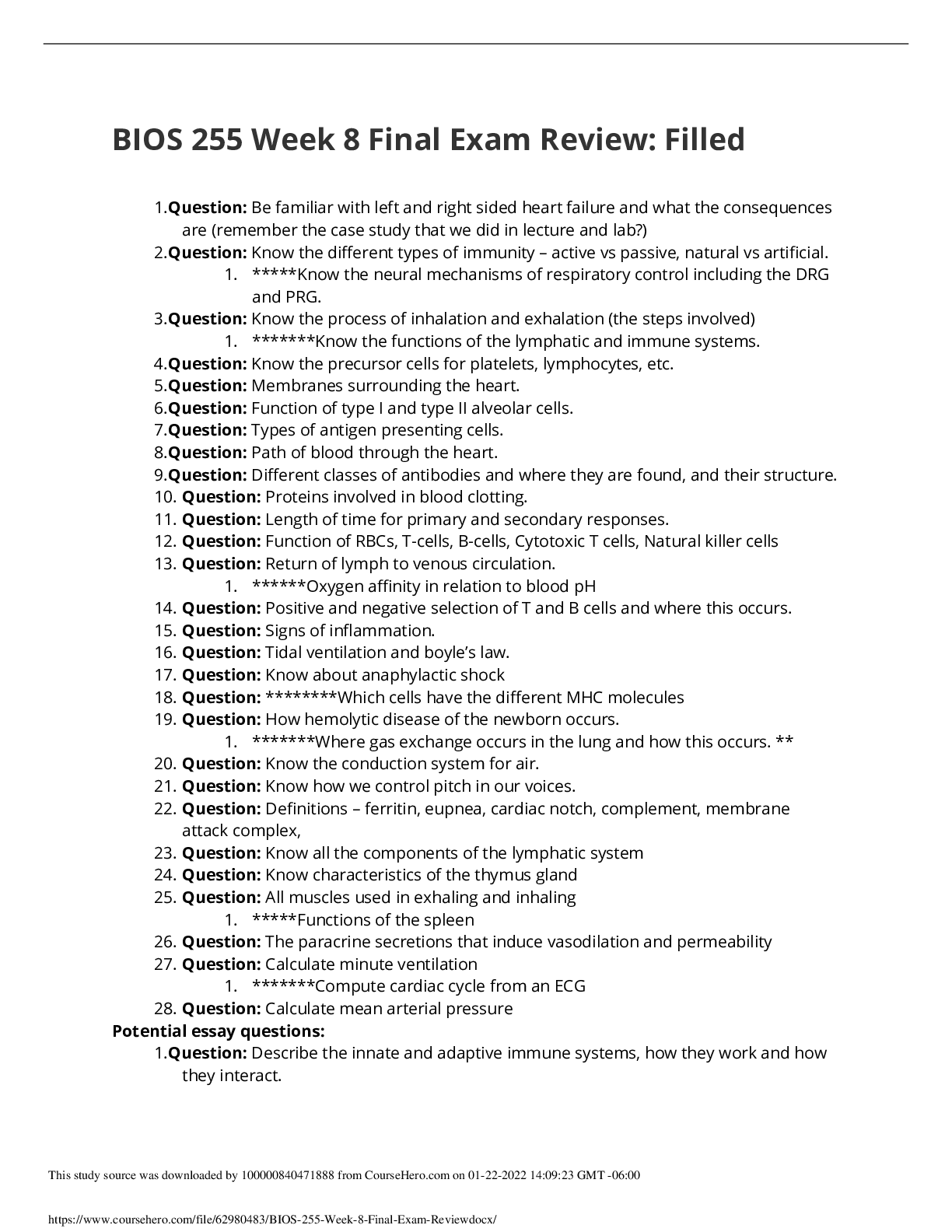*NURSING > EXAM REVIEW > NURS 6512 Final Exam Review (Week 7-11) (All)
NURS 6512 Final Exam Review (Week 7-11)
Document Content and Description Below
Heart, Lungs, and Peripheral Vascular (Week 7: Ch. 13, 14, & 15) • Examination techniques of the Heart, Lungs, and PV systems (See Notes) • Examination findings of arterial blood flow in infan... ts (339) (345) o At birth the cutting of the umbilical cord, through which oxygen has been provided in utero, requires the infant to begin breathing. The onset of respiration expands the lungs and carries air to the alveoli. o When pulse is weak, expect cardiac output bay be diminished or peripheral vasoconstriction may be present. A bounding pulse is associated with a large left- right shunt produced by a patent ductus arteriosus. In coarctation of the aorta, a difference is noted in pulse amplitude between the upper extremities or between the femoral and radial pulses or the femoral pules are absent capillary refill times in infants and children younger than 2 years of age are raid, less than 1 second. A prolonged capillary refill time, no longer than 2 seconds, indicates dehydration or hypovolemic shock. • Examination findings of the heart and lungs in a patient with illegal drug use (266) o If an adult- especially young- or an adolescent describes severe, acute chest pain, ask about drug use, particularly cocaine. Cocaine can cause tachycardia, hypertension, coronary arterial spasm (with infarction), and pneumothorax (lung collapse) with severe acute chest pain being the common result. • Description: shortness of breath (orthopnea, platypnea. Tachypnea, bradypnea) (265) o Orthopnea- shortness of breath that begins or increases when the patient lies down; ask whether the patient needs to sleep on more than one pillow and whether that helps. o Platypnea- dyspnea increases in the upright posture. o Tachypnea- increased rate of respirations of breath; abnormally rapid breathing. (COPD or Pneumonia) o Bradypnea-breathing more slowly than normal, could mean the body isn’t getting enough oxygen. (sleep apnea, drug overdose, carbon monoxide poisoning) o Paroxysmal nocturnal dyspnea- sudden onset of SOB after a period of sleep; sitting upright is helpful. • Symptoms associated with intrathoracic infection o The patient may have any combination of the nonspecific symptoms, such as fever, dry or productive cough, blood-streaked sputum, shortness of breath, chest pain, weight loss, fatigue, and anorexia. Physical examination may reveal abnormal breath sounds. • Percussion techniques when examining the lungs (273-275) o Percuss the chest directly or indirectly, comparing sides in three areas. On the posterior chest, percuss with the patient’s head bent forward and arms folded in front. On the lateral chest, percuss with the patient’s arms raised. On the anterior chest, percuss with the patient in the same position. • Examination findings when percussing the lungs (274) o You should hear resonance over all lung areas. Hyperresonance associated with hyperinflation may indicate emphysema, pneumothorax, or asthma. Dullness or flatness suggests pneumonia, atelectasis, pleural effusion, pneumothorax, or asthma. Percuss Tones Heard over the Chest (274) • Cardiac examination findings for a patient with rheumatic fever (330-331) o Systemic connective tissue disease occurring after streptococcal pharyngitis or skin infection. Patho- characterized by a variety of major and minor manifestations (major: carditis, polyarthritis, chorea, erythema marginatum, subcutaneous nodules) (minor: previous rheumatic fever, arthralgia, fever, laboratory, clinical). May result in serious cardiac valvular involvement of mitral or aortic valve; tricuspid and pulmonic are not often affected. Affected valve becomes stenotic and regurgitant. Children between 5 and 15 years of age are most commonly affected. Prevention-adequate treatment for streptococcal pharyngitis or skin infections-is the best therapy. Subjective Data- fever, inflamed swollen joints, flat or slightly raised, painless rash with pink margins with pale centers and a ragged edge (erythema marginatum). Aimless jerky movements (Sydenham chorea or St. Vitus dance). Small, painless nodules beneath the skin. Chest pain, palpations, fatigue, or shortness of breath. Objective Data- characterized by a variety of major and minor manifestations. Murmurs of mitral regurgitation and aortic insufficiency. Cardiomegaly, friction rub of pericarditis, or signs of CHF. ............................................................CONTINUED.................................................... [Show More]
Last updated: 1 year ago
Preview 1 out of 20 pages

Reviews( 0 )
Document information
Connected school, study & course
About the document
Uploaded On
Apr 04, 2022
Number of pages
20
Written in
Additional information
This document has been written for:
Uploaded
Apr 04, 2022
Downloads
0
Views
54

.png)

